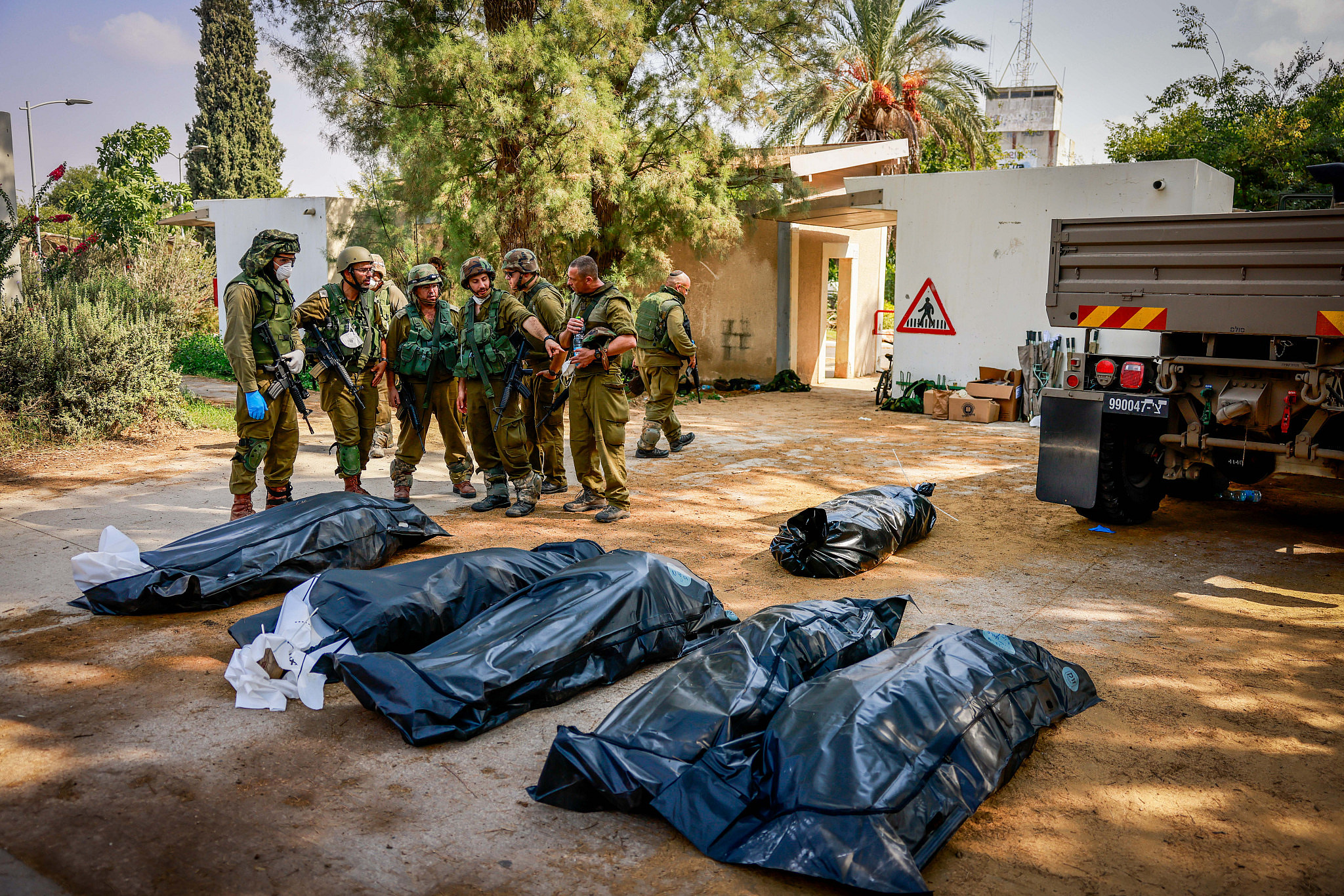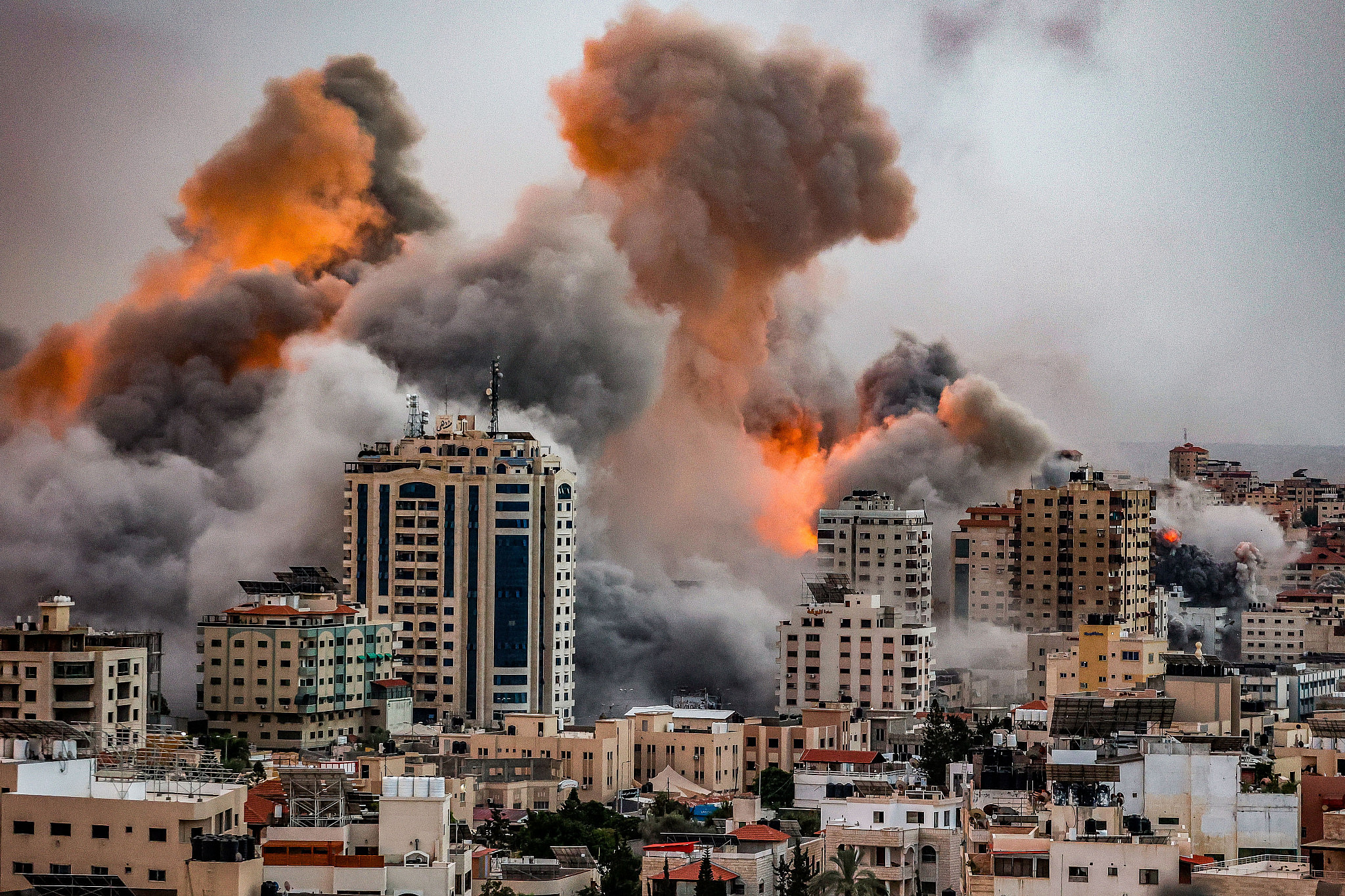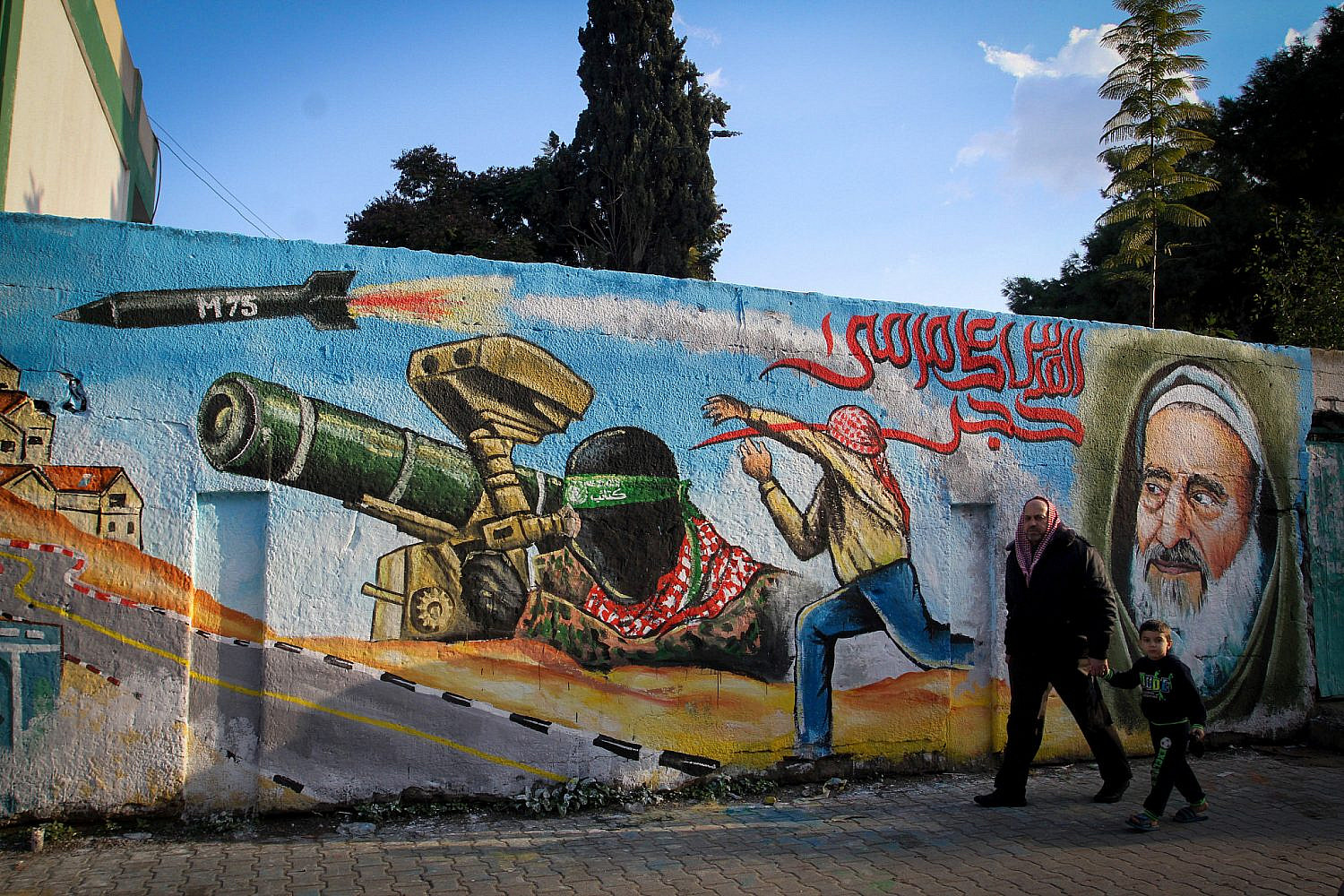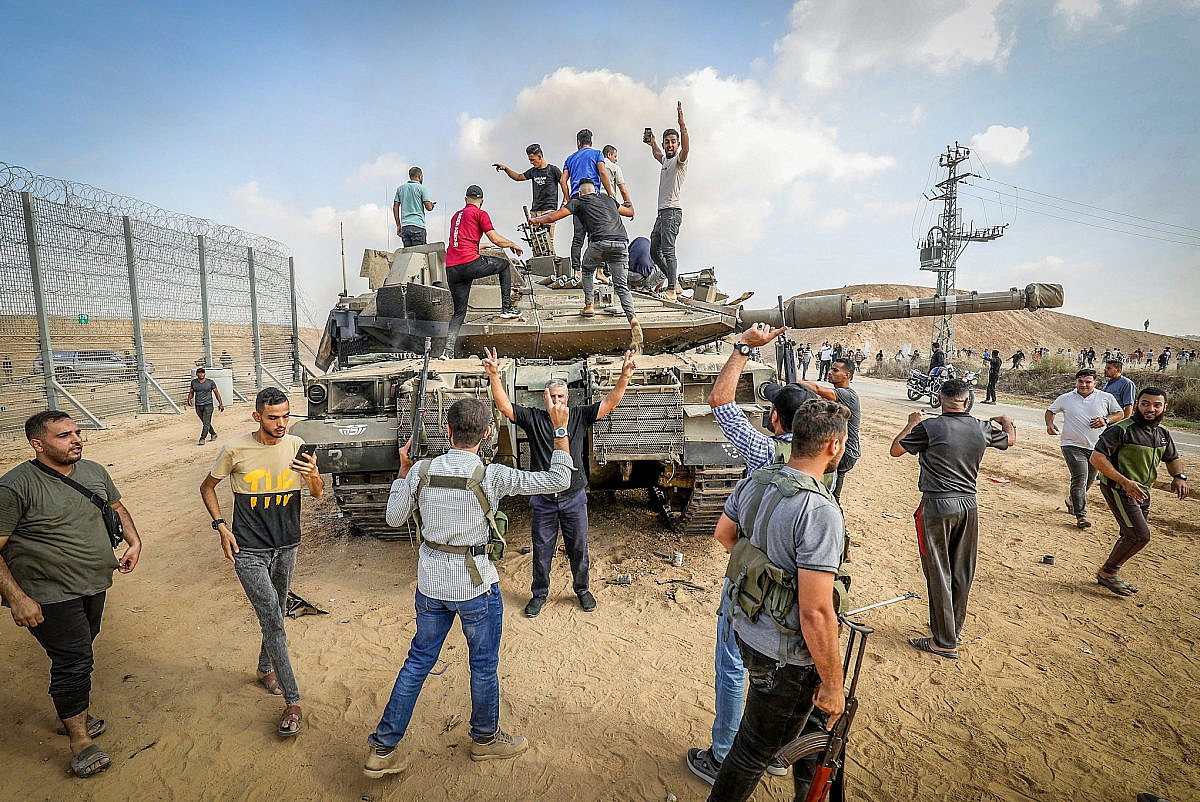Palestinians and Israelis have grown accustomed to wars in the south in recent years. But the war that began in the early hours of Saturday, Oct. 7 is nothing like the others. In a startling assault, scores or hundreds of Hamas operatives, under a hail of rockets, crossed the Israel-Gaza separation barrier into Israeli towns near the blockaded strip: some seem to have broken through weak points in the metal fences, others went by boat along the Mediterranean coast, some flew paramotors over the walls. A Hamas unit also targeted the Erez Crossing, the only civilian checkpoint between Gaza and Israel, seizing it from army control for several hours.
By sunrise, Palestinian gunmen were roaming the streets of Sderot, Nir Oz, Kfar Aza, and other kibbutzim, breaking into civilian homes, fighting with security forces and firing in all directions. An overnight desert rave, inexplicably organized in the border region, was also attacked.
By the time the Israeli authorities realized what was happening, “Operation Al-Aqsa Flood,” as Hamas has called it, had already inflicted a bloody toll. Horrifying stories are emerging of the shootings and kidnappings, with children among the victims. Abu Obaida, the Hamas spokesman, threatened to execute hostages if Israel carried out air strikes with no warnings to civilians. As of Tuesday evening, over 1,000 Israelis have been reported killed, more than 2,400 wounded, and about 100 abducted to Gaza.
Among everything else, this was a disastrous Israeli intelligence and operational failure, regarded as the worst since the Yom Kippur War: it’s surely no coincidence that Hamas launched its incursion on the 50th anniversary of that conflict. News is still coming in, but it’s evident that, in terms of non-combatants, this is one of the deadliest massacres in Israeli-Palestinian history.

Disoriented and humiliated, the Israeli military has been rushing to match the death count, killing hundreds of Palestinians with relentless bombing — over 950 as of Tuesday. And it is just getting started.
“I’ve ordered a full siege of the Gaza Strip,” the defense minister, Yoav Gallant, declared. “No power, no food, no water, no gas, everything is closed. We are fighting human animals and we act accordingly.” Other ministers, some of whom have previously advocated for the direct reoccupation of Gaza and a “second Nakba” to expel Palestinians entirely, are screaming for retribution. “Get out of there now,” Benjamin Netanyahu told Gazans in a video statement — a cruel joke to 2 million people who have been trapped in an overcrowded enclave for 16 years.
Palestinians are watching all this with a mix of astonishment and paralyzing fear. The sight of Gazans paragliding over Israel’s separation barrier, and walking on land from which their ancestors were forcibly expelled by Zionist forces in 1948, rejuvenated a sense of political possibility. Video montages of militants and armed drones in action have been widely shared on Arabic social media, providing front-row seats to the operation in mimicry of IDF public relations stunts. Other images have also gone viral: a Palestinian bulldozer tearing down a section of the barbed-wire fence; gunmen dancing on the roof of a captured Israeli tank; the Erez Crossing left damaged and burned.
But there is great terror, too. Gazans have been rushing to stock up on food amid the Israeli onslaught, saying goodbye to loved ones in case they never see them again. Families are fleeing from one neighborhood to the next to escape the bombardment. One journalist I work with in Gaza, minutes after submitting an article, texted to say he had to rush his family out of the house because the Israeli army had warned they were about to start firing on the neighborhood.
Many residents, afraid to speak out against Hamas, which has ruled the strip with an authoritarian grip since 2007, are fuming at the Islamist group for exposing them to Israel’s deadliest rampage since at least 2014. Inside Israel, Palestinian citizens are dreading a rerun of the events of May 2021, when Jewish mobs and police forces attacked Arab areas and arrested hundreds of people. A fresh surge of settler attacks, which have been escalating for months, is already underway in the West Bank, all under the army’s watch.

A number of analysts are describing Hamas’ assault as a “game changer.” This isn’t an overstatement. The attack will probably do little to roll back Israel’s siege of the strip, which will surely be reinforced with even more cruelty. What it has done, however, is shatter a psychological barrier as consequential as the physical one.
Since the end of the Second Intifada, and especially under Netanyahu, Israeli society has tried to insulate itself from the military occupation it has imposed for more than half a century, maintaining a bubble that was only occasionally punctured by rocket barrages or shootings in southern and central cities. Israel’s mass protest movement, which has been agitating since January against the government’s plans to overhaul the judiciary, has consciously kept the Palestinian question off its agenda. Apart from a small bloc of anti-occupation protesters, most still clung to the illusion that the current structures of permanent rule could deliver safety for Israelis and remain compatible with their claim to democracy.
That bubble has now irreparably burst. But Israelis, who have been shifting politically rightward for years, are far from questioning or recalculating their commitment to iron rule. For the far-right demagogues in power – foremost among them Finance Minister Bezalel Smotrich and National Security Minister Itamar Ben Gvir — this is a historic opportunity to fulfil their wish list: the destruction of large parts of Gaza, the elimination of Hamas’ political and military apparatus, and, if possible, the expulsion of tens to hundreds of thousands of Palestinians into the Egyptian Sinai.
What does Hamas expect from this? Beyond a bombastic speech by its top military commander, Mohammed Deif, calling on all Palestinians to exact a price for a long list of Israeli crimes, it is hard to say. Since the Islamist movement’s takeover of Gaza 16 years ago, after international sanctions and a civil war with Fatah ousted it from a democratically elected government, armed confrontations with Israel have been Hamas’ default method (and that of other groups such as Islamic Jihad) for negotiating prisoner releases, curbing Jewish worship or police harassment at Al-Aqsa Mosque, and easing Israel’s restrictions on goods and people in Gaza.

In recent months, however, Hamas has come under increasing pressure from the Gazan public for failing to meet their basic needs, electricity in particular — a near impossible task under conditions of siege and repeated wars, made worse by corruption and the unequal distribution of limited resources. Beyond Gaza, Israel’s far-right coalition has galvanized the settler movement to assert its “sovereignty” over the West Bank by launching pogroms, building more outposts, and chipping away at the so-called status quo at Jerusalem’s holy sites. The prospect of a Saudi-Israel normalization deal, vehemently encouraged by the Biden administration, is threatening to remove one of the last geopolitical cards the Palestinian cause still carries.
For Hamas, then, a minor adjustment to the blockade was no longer enough. A spectacle of shock and awe was needed to shake up the political architecture, and they have realized it with terrifying effect. Even with months or years of meticulous planning and secrecy, the degree of success was perhaps as surprising to them as to the Israelis.
But beyond the seismic psychological shift, it is unclear how this assault — against a nuclear-armed, Western-backed, heavily militarized state — can alter a balance of power that has been tipping against the Palestinians for decades. The United States has rushed to provide Israel with material and rhetorical support, and European states have quickly fallen in behind Israel’s defense, sweeping under the rug months of discontent with the far right’s madness.
Arab autocrats are more eager to tap into Israel’s economy and security industries than provide Palestinians anything beyond financial aid. The fate of the Palestinian leadership still hangs on the breath of an octogenarian president, Mahmoud Abbas, while fratricidal rivalries continue within Fatah as well as between Fatah and Hamas. The Palestinians are losing leverage fast, and while it is too early to tell, Hamas’ feverish onslaught may not be enough to regain it. At worst, it will backfire catastrophically.
Most read on +972
Even so, the assault of Oct. 7 remains symptomatic of a larger untreated condition. In West Bank cities and refugee camps such as Jenin and Nablus, young Palestinians — many of whom were raised under the false promises of the Oslo Accords, signed 30 years ago last month — have been taking up arms and joining local militias unaffiliated with the major political parties.
On the streets and online, Palestinian activists no longer care to tiptoe around diplomatic language or references to international laws that have failed them. They reject the amnesiac narrative that their grievances began in 1967 rather than 1948, and that their future lies in a quasi-state on only a fifth of their homeland rather than its entirety. They are tired of apologizing for the use of violence, however ugly, as if violence were not an inherent part of all anti-colonial struggles, as if it were more egregious than the oppressive system they are trying to dismantle, and as if their nonviolent efforts at boycotts and diplomacy were not similarly crushed and demonized as “terrorism.” For them, the enemy is and has always been a settler colonial movement bent on their erasure. Invoking decolonization, though, shouldn’t entail a zero-sum position that refuses to sympathize with what happened to Israeli families on Oct. 7, and neither should the killings be an excuse to consolidate Israel’s apartheid regime and abet its wrath.
A version of this article was first published in the London Review of Books Blog. Read it here.





